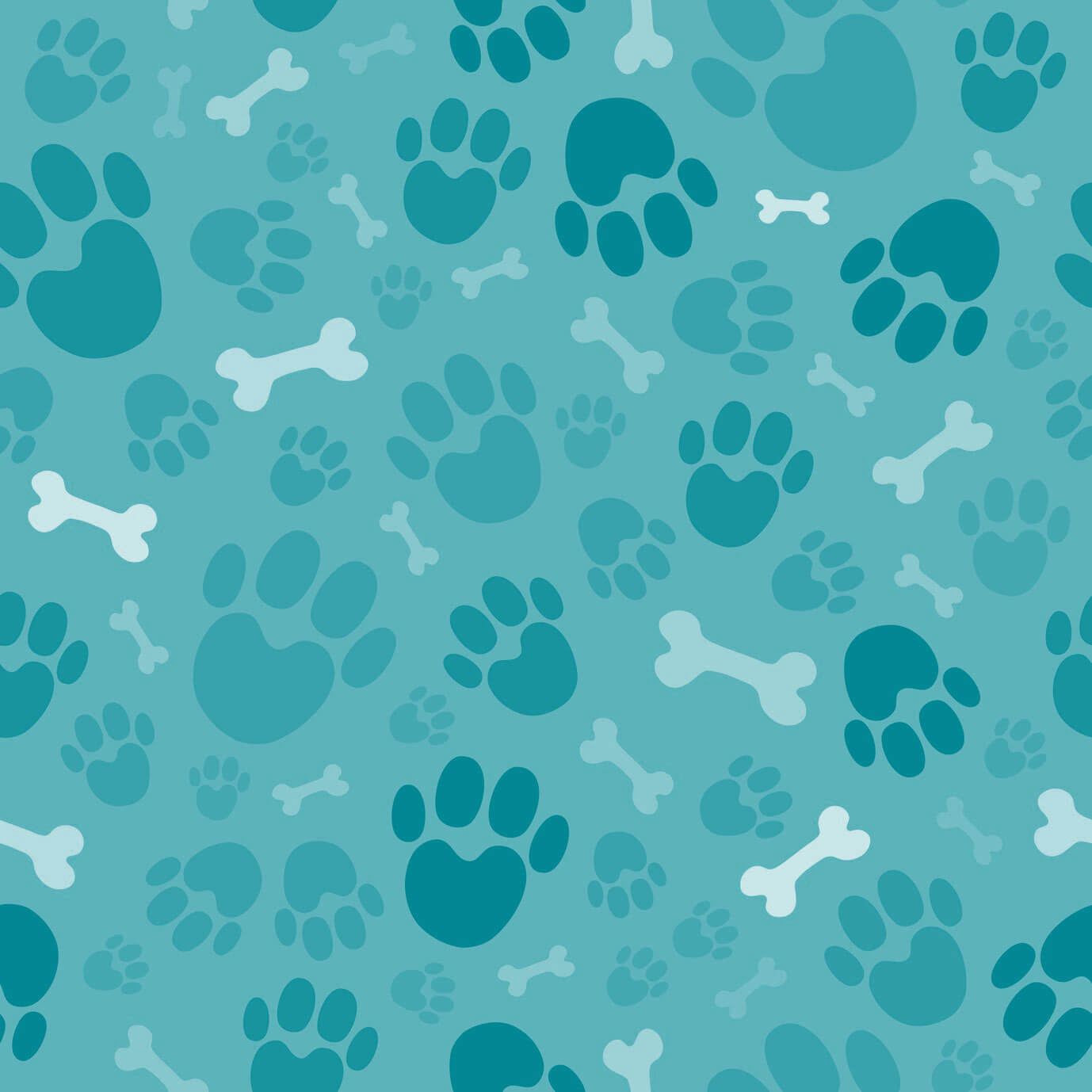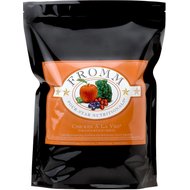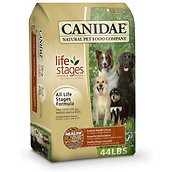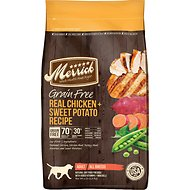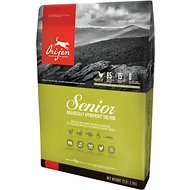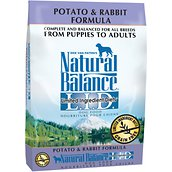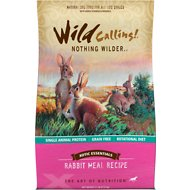Best Food for Appenzeller Sennenhunde
The Ultimate Appenzeller Sennenhunde Food Buyer’s Guide
The Appenzeller Sennenhunde is one of four types of Sennenhund breeds developed in Switzerland as a herding, guard, and utilitarian draft dog. The other breeds are the Bernese Mountain Dog, the Entlebucher (or Entlebucher Mountain Dog), and the Greater Swiss Mountain Dog. The breeds vary in size but, like the Appenzeller Sennenhunde, they are black with tan/rust points and a white throat (tri-color).
Of all of these dogs from the Swiss Alps, the Appenzeller is medium in size, unlike the Bernese and the Greater Swiss Mountain Dog, which are much larger. However, like the others, the Appenzeller also has a heavy, mastiff-like build.
All of the breeds share a similar origin. They are likely descended from alpine dogs that were crossed with mastiff-type dogs brought by the Romans. (This is the most likely story, although there is some doubt about it.) Like the other Sennenhund, the Appezeller was originally kept as a cattle herding dog and flock guardian. It was an all-around farm dog and also used as a draft dog for pulling things. (You can read a lengthy history of the breed on this site, though some of it is speculative.)
The breed was first described in the 1853 book Tierleben der Alpenwelt (Animal Life in the Alps) as “a clearly barking, short haired, medium size, multicolour cattledog of a quite even “Spitz type,” which can be found in certain regions and is used partly to guard the homestead, partly to herd cattle.” The Appenzeller Sennenhunde was designated as a separated breed in 1898. The first breed club for the Appenzeller was formed in 1906 by Albert Heim, the same man who was instrumental in identifying the Greater Swiss Mountain Dog as a separate breed from the Bernese Mountain Dog and saving that breed. Fanciers wrote the first standard for the breed in 1916.
The first Appenzellers began to appear in the U.S. at the end of the 20th century but the breed remains very rare in this country. The United Kennel Club (UKC) recognized the breed as a member of the Guardian group in 1993. A small number of fanciers from the U.S. and Canada formed the Appenzeller Mountain Dog Club of America (AMDCA) with the goal of earning recognition from the AKC. (The other three Sennenhund breeds are already recognized by AKC.) By 2007 the Appenzeller Sennenhunde had entered the AKC’s Foundation Stock Service Program (AKC-FSS), the first step towards full recognition for a breed with AKC. The breed currently has very low numbers in the U.S. and its future is not secure.
The Swiss recognize the breed under the name “Appenzeller Sennenhund,” which is translated in English as Appenzell Cattle Dog by the FCI. In the United States the United Kennel Club (UKC) registers the breed as the Appenzeller. AKC’s Foundation Stock Service calls the breed the Appenzeller Sennenhunde. The Kennel Club in Britain does not currently recognize the breed. Some people also refer to the breed as the Appenzeller Mountain Dog.
The Appenzeller is athletic, lively, and high spirited. They do tend to be suspicious of strangers. It’s important for these puppies to be socialized beginning when they are young with both dogs and people. They need regular activity and training. Note that the Appenzell Mountain Dog Club of America says that there can be a lot of variation in the temperament of individual Appenellers. According to the club, the dogs are always athletic, smart, don’t tire easily, they watch over the home, they are devoted to the family, and sensitive to your emotions. They are also playful. When they play, they can play roughly, so if you have small children or other pets, you need to supervise any play. They must have their activity and socialization needs met. Otherwise, they can become destructive. These dogs tend to be exuberant and they can be stubborn, so it’s helpful if you already have some experience with dogs if you want to own an Appenzeller. However, in the right home, they are great dogs – if you can provide the exercise and training they require. You can read more about the Appenzeller temperament here.
Due to careful selective breeding, the Appenzeller tends to be a very healthy breed. It’s not unusual for dogs of this breed to live 13 to 17 years.
Today the Appenzeller is primarily a companion dog. They can excel in agility, flyball, obedience, and Schutzhund. They also participate in weight pulling activities. In some places they are still used as working cattle dogs. The Appenzeller is known to be very intelligent and they learn quickly.
Disclosure: Please note that this post contains affiliate links, which will direct you to our partner sites. If you purchase the pet foods we recommend through those links, we may earn a small commission – at no extra cost to you.
Quick Look : Top 4 Best Dog Foods for Appenzeller Sennenhunde
Appenzeller Nutritional Needs
Male Appenzellers stand 20 to 22 inches tall; females 20 to 21 inches tall. Both males and females generally weigh 49-71 pounds. (According to one breeder, males typically weigh 60-75 pounds and females 50-65 pounds.) You should keep in mind that this breed has a very small population, especially in North America, and it is currently not standardized. You may find some variety in size and appearance while breeders import dogs and breed from various bloodlines to help the breed become more established. This can be good genetically but it also means there can be surprises – you could end up with an Appenzeller that is larger or smaller than normal, for example. You can view the breed standard for the Appenzeller in its native Switzerland here.
According to the National Research Council of the National Academies, an adult Appenzeller Sennenhunde weighing 70 pounds requires an average daily caloric intake of 1688 kcal. Dogs that have been spayed/neutered, or that are older, may need slightly fewer calories. Some dogs may need more calories depending on their level of activity and their individual metabolism. If you and your Appenzeller are doing agility, for example, you might have to increase the calories you feed. Growing puppies consume more calories than adult dogs and so do young adult dogs. A young Appenzeller Sennenhunde puppy (4-12 months) weighing 50 pounds needs an estimated 1457 kcal per day. You always need to adjust your dog’s food intake based on his activity level and other factors.
While an Appenzeller won’t grow as fast or have some of the bone and joint problems found in the giant Swiss breeds, it’s still a good idea to monitor how much you are feeding these puppies. A puppy needs to eat enough food, but also must not eat too much. Fat puppies can end up with orthopedic problems and other health issues later in life such as hip and elbow dysplasia or osteochondritis dissecans (OCD). Lean puppies are better than roly-poly puppies.
If you feed a puppy food, most breeders recommend feeding the food until your puppy reaches about 90 percent of his adult size. You can also safely feed an all life stages food as long as you make sure that it has the proper calcium level and calcium to phosphorus ratio. You should talk to your breeder about the food they recommend for their puppies since they usually have experience with how their puppies grow and develop.
Most breeders recommend feeding Appenzeller puppies three meals per day while they are young. You can switch to two meals per day as your dog approaches adulthood.
Feeding Your Appenzeller Sennenhunde
Since the Appenzeller Sennenhunde is a rare breed, especially outside its native Switzerland, there is not a great deal of solid information available about the diet or health of these dogs. Much of the information you can find online is in German. According to what we have been able to find, the diet for the Appenzeller is described as “uncomplicated.” As farm and cattle dogs in an area known for its harsh weather and terrain, the Appenzeller has historically been a dog able to perform strenuous work on spartan rations according to the Schweizer (Swiss) Club für Appenzeller Sennenhund.
Other sources report that the Appenzeller has a good appetite and usually devours any food you place in front of him. You will need to watch calories with this breed since they like to eat.
Considering these factors, we would suggest good premium dog foods with moderate levels of protein and fat; and low to moderate carbohydrates. This is a very active breed with high exercise requirements but unless your Appenzeller is actually burning up a lot of calories each day, it’s best to keep calories moderate.
Health studies and other verifiable health data about the Appenzeller appear to be currently lacking so it’s difficult to make precise recommendations about ingredients. Most sources in both Europe and North America report that this is a very healthy breed. However, this is often the case until health studies are done or owners start testing and reporting results. (This is one of the reasons why purebred dogs are often unfairly criticized for being unhealthy. In fact, their owners are far more likely to test dogs as a routine, preventive measure – which naturally leads to finding and reporting more issues.) At any rate, we have not seen any suggestion from owners or breeders that the Appenzeller is prone to food allergies or other gastrointestinal problems that would affect the food you select.
Appenzeller Sennenhunde Health Issues
As mentioned, all of the information we have found suggests that the Appenzeller Sennenhunde is a very healthy breed with few health problems. In Europe, where the breed has been bred by fanciers for the last 100 years, breeding requirements can be strict, which may contribute to the health of the breed.
On the other hand, several sources, including breeders, have remarked that there are currently no health studies on the Appenzeller. This means that even if there are health problems in the breed, the small community of breeders and owners may not currently be aware of a problem. This is a breed with a very small population so it will certainly be necessary to proceed carefully for the sake of the future genetic health of the breed when making breeding decisions.
According to one breeder:
Most fanciers of the breed concur that the breed is relatively healthy. It does not seem that the breed suffers from any health problems at significantly higher rates than purebred dogs in general. The life expectancy of the Appenzeller is between 12 and 13 years, roughly average for a dog of his size.
Since skeletal problems do occur in breeds related to the Appenzeller, this particular breeder recommends that the breed have their hips, elbows, and patellas certified by the Orthopedic Foundation for Animals (OFA) with good or better ratings before breeding. Visual problems are also known in related breeds so this breeder also recommends having a dog’s eyes checked, with results reported to the Canine Eye Registration Foundation (CERF).
Another Appenzeller breeder notes that hip dysplasia is rare in the Appenzeller Sennenhunde but recommends having dogs x-rayed for hip dysplasia so that it will remain rare.
The Appenzell Mountain Dog Club of America does not currently make any health recommendations for the breed and OFA does not list ratings for the breed in their database. (However, you can find individual Appenzellers and their test results on the site.)
Related breeds have issues with gastric gastric dilatation and volvulus (GDV) or bloat, though the Appenzeller is not a giant breed and does not have the same body type as some of these related breeds (Bernese Mountain Dog and Greater Swiss Mountain Dog). We have not seen any reports that bloat occurs in the Appenzeller.
Some related breeds have problems with demodectic mange.
Idiopathic epilepsy occurs in some related breeds but epilepsy can occur in any breed or mixed breed.
Hemolytic anemia has occurred in some related breeds but we have not seen any suggestion that it occurs in the Appenzeller.
These are simply health issues that are linked to related breeds so we would be remiss if we did not mention them.
The normal lifespan for the Appenzeller Sennenhunde is reported to be 12 to 13 years. However, many dogs live to be 15 or 16 years of age. This is a long-lived, hardy dog.

The Appenzeller Sennenhunde is a medium-sized dog. The breed originated in the Alps and is related to other Swiss breeds like the Bernese Mountain Dog and the Greater Swiss Mountain Dog.
Ingredients to Look for and Some to Avoid
As with most dogs, when choosing a food for your Appenzeller Sennenhunde you should look for a food that has good sources of protein and fat. You do need to make sure your Appenzeller gets plenty of exercise and watch how much you feed. According to the sources we have seen, this is a breed that likes to eat. They can be inclined to put on extra weight if you feed to much, especially if they are not getting the exercise they need. Keep in mind that malnutrition is not the only thing that can harm your dog. Over-nutrition can also be bad.
Ideally you will select a dog food that features two or three meat proteins in the first several ingredients listed. Both whole meats and meat meals are good sources of protein. Whole meats refer to foods such as whole chicken, beef, fish, and lamb. Some people don’t like meat meals as much as whole meats but they are a concentrated form of the meat in which the moisture has been removed. They contain several times as much protein as a whole meat. Meat meals are usually quite acceptable as one of the first ingredients in a good quality dog food. They are used by many good dog food brands.
Many dog foods today, even some of the most expensive and highly touted, use lots of plant proteins such as lentils and peas. These foods often have high protein percentages on the label. When you read the guaranteed analysis it’s important to consider how much of the protein in the food comes from meat and how much comes from plants. Your dog is able to digest meat protein more easily than plant protein. Meat protein is a much more natural source of protein for your dog than plant protein.
Dogs also need good sources of fat. You should look for named fat sources such as chicken fat. Other named fats also provide needed nutrients such as fish oil which can provide omega-3 fatty acid to help keep the skin and coat healthy. Puppies can benefit from DHA which is Docosahexaenoic acid. This is a specific form of omega-3 fatty acid that helps with brain and eye development. Older dogs seem to benefit from medium chain triglycerides which feature medium chain fatty acids (MCFAs). These have been found to help older dogs feel and act younger. They are often made from a combination of coconut oil and other oils.
Some owners like to feed a dog food with more natural ingredients to try to keep their dog’s immune system as strong as possible. Many people recommend feeding a food that is free of some of the most common food irritants such as corn, soy, and wheat. These are not the most common dog food allergens – beef, dairy products, and chicken, for example, lead to more food allergies for dogs than corn, soy, and wheat. Avoiding artificial colors, flavors, sweeteners, and preservatives is also suggested as a way to help keep the immune system stronger.
If you want to avoid corn, soy, and wheat in your dog food, your Appenzeller Sennenhunde may still be able to eat an alternative grain such as barley or oats. Or you can feed a grain free dog food that uses an alternate source of carbs that is low glycemic such as sweet potatoes. You don’t have to feed a dog food with an excessively high percentage of protein but it’s a good idea to keep the carb percentage low to moderate.
If your Appenzeller Sennenhunde has a food allergy or food sensitivity, you may need to work with your veterinarian to identify the food triggers unless they are very obvious. There are lots of good foods with alternative meat proteins today as well as limited ingredient diets which we will discuss below.
Even though the Appenzeller is not a giant breed like his cousins the Bernese Mountain Dog and the Greater Swiss Mountain Dog, it’s still a good idea to keep puppies lean while they are growing. Being overweight as a puppy – 0r as an adult – can contribute to hip dysplasia and joint problems such as arthritis later in life.
Recommended Dog Food For The Appenzeller Sennenhunde
Taking all things into account, we are recommending foods with moderate levels of protein and fat for the Appenzeller. If you prefer to feed a higher protein diet, you should watch the calories since high protein diets are often higher in fat. Since this does seem to be a breed that likes to eat, they may put on extra weight, especially if they don’t get all the exercise they need. Carrying too much weight can exacerbate any bone or joint problems. You may have to try a couple of foods to find which one is best for your dog. You should also keep in mind that your dog’s dietary needs can change as he grows and ages so you may have to change foods to suit him.
You may want to talk to your dog’s breeder to see which foods they recommend, especially for growing puppies. Your dog’s breeder may also recommend some nutritional supplements for your dog.
Every dog is an individual. Even dogs in the same breed can have different food needs. Some dogs need more calories than others. Some dogs will do better with more protein or fat than other dogs. We are providing several suggested foods for your Appenzeller which meet our standards but you may have to use a trial and error method to see which food your dog does best on.
When you are trying a new food, be sure to allow several days to slowly transition to the food, mixing in a little of your dog’s old food each day. Of course, if your dog shows signs that he doesn’t like the food or doesn’t tolerate it, you will have to make adjustments. If your dog eats the food but you don’t like his condition after a few weeks, you can change him back – slowly – to his previous food. It’s best not to go directly to another new food. You can upset your dog’s gastrointestinal system if you keep changing to too many new foods in a short period of time. Once your dog has settled back with his old food, you can once again try a new food. You should allow at least a couple of weeks between foods before trying another new food so you can give your dog’s system a chance to rest and recover. This also gives the new food a fair chance.
If you try a new food and your dog doesn’t seem enthusiastic about it, you might also try another food from the same product line that uses a different kind of meat protein or other ingredients. As long as the guaranteed analysis and nutrient percentages are similar, the food should be similar to the original food you selected.
When you are feeding a new food and your dog is eating it without problems, it’s important for you to assess his physical condition. Is he gaining or losing weight on the new food? Does his coat look healthy? Are his eyes bright? Does he seem to have good energy or is he more lethargic than usual? And, the big question for any dog lover – what does his poop look like? As most dog lovers know, you can tell a lot about a dog’s health by checking his poop. Does it look normal and firm? If he having regular bowel movements. Those are good signs. If your dog is having runny poop or diarrhea; or if he is having trouble with his bowel movements, it could be because of the new food. These are all things you should note during the first few weeks of feeding a new food. Even if your dog LOVES the food, if he’s not thriving, you may have to rethink his diet or how much you are feeding him.
All of the foods listed are free of corn, wheat, and soy unless otherwise noted.
Best Dog Foods for Appenzeller Sennenhunde Adults
Fromm Four-Star Nutritionals Chicken a la Veg
Fromm’s Four-Star Nutritionals Chicken a la Veg has chicken, chicken meal, pearled barley, oatmeal, and sweet potatoes as the first five ingredients. We like the chicken and chicken meal as protein in the first two ingredients; and we think the pearled barley and oatmeal are good sources of dietary fiber. Sweet potatoes are a medium-glycemic carbohydrate. The food has 24 percent crude protein and 15 percent crude fat, and 3.5 percent crude fiber, with 395 kcal/cup. It is AAFCO-approved for all life stages. The food has chicken cartilage which is a natural source of glucosamine; probiotics, and antioxidants. No corn, wheat, or soy. The food is also made at the family’s own facilities in Wisconsin. The Fromm family has been making dog food and dog products for over 100 years and they have a great reputation. We think the ingredients are good quality and many Appenzeller Sennenhunde will do well on this food.
 Canidae All Life Stages Chicken, Turkey, Lamb & Fish Meals Formula
Canidae All Life Stages Chicken, Turkey, Lamb & Fish Meals Formula
This Canidae formula is an all life stages food so you can feed it to dogs of all ages. It’s particularly good if you have multiple Appenzeller since it has multiple protein sources but it’s also a good food if you just have one dog. The first five ingredients are: Chicken meal, turkey meal, lamb meal, brown rice, and white rice. The food does contain grains (rice, oatmeal, barley) but we haven’t seen anything to suggest that the Appenzeller is a breed with allergies or gastrointestinal problems or that they should particularly avoid healthy grains. The food contains no corn, wheat, or soy. The food is naturally preserved and it contains pre- and probiotics for healthy digestion, along with antioxidants and omega 6 and omega 3 fatty acids for good skin and coat. The guaranteed analysis shows 24 percent crude protein; 14.5 percent crude fat; and 4 percent crude fiber. It has 468 kcal/cup. We think this is a good food for dogs that do well on moderate protein and fat. Canidae has had a good reputation for many years.
 Merrick Grain Free Real Chicken & Sweet Potato Dry Dog Food
Merrick Grain Free Real Chicken & Sweet Potato Dry Dog Food
If you would like a higher protein percentage for your Appenzeller, many dog owners like Merrick Grain Free foods. The first five ingredients in this food are Deboned Chicken, Chicken Meal, Turkey Meal, Sweet Potatoes, and Potatoes. This recipe is an all life stage food with 460 kcal per cup ME (metabolizable energy) on an as fed basis (calculated). It has 70 percent meat ingredients, 30 percent vegetables, vitamins, and minerals. It is grain free – no corn, wheat, or soy. No gluten. No ingredients from China. It has 38 percent crude protein and 17 percent crude fat, with 3.5 percent crude fiber. It also has glucosamine and chondroitin added, as well as omega-3 and omega-6 fatty acids. Merrick uses local growers from Texas, where the food is made. We think this food has good quality protein and other ingredients for a very active Appenzeller. Not everyone will like a protein percentage this high but if you do, give this food a try.
*New Formula* ACANA Grasslands Regional Formula Grain Free Dry Dog Food
If your Appenzeller is very active (doing agility or other sports, for example), we can also recommend Acana foods. Champion Pet Foods has completed their new kitchen in Kentucky and they have reformulated some of their dog and cat foods to reflect what is now “regional” to the Kentucky area. So, it’s still the same award-winning company, but Acana is being made in Kentucky. We’ve had a chance to review the Acana dog and cat foods and there are some changes in the meat proteins but the foods still look good. If you visit the Acana web site you can view the old and new formulas to see the changes (we really like being able to compare the formulas). The current (old) Grasslands formula, for example, is heavy on lamb, duck, whitefish, and lentils. The new formula will feature goat meal and catfish meal, in addition to the lamb and duck. The old formula has 31 percent crude protein, 17 percent crude fat, 5 percent crude fiber, and 10 percent moisture. The new formula has 33 percent crude protein, 17 percent crude fat, 6 percent crude fiber, and 12 percent moisture. The food has 60 percent animal protein ingredients and 40 percent vegetables, fruits, and botanicals. No grains, potatoes, or tapioca. If you’re looking for a good grain free dog food for your Appenzeller that is low in carbohydrates, we think that the Acana foods are a good choice. Acana foods typically have slightly less meat protein than Orijen (made by the same company), but we think they’re a good choice for many dogs. Most people still seem to like the Acana foods now that they are being made in Kentucky but if you have questions about them, we recommend talking to people who feed these foods to their dogs for their opinions.
Best Dog Foods for Appenzeller Sennenhunde Puppies
Appenzeller Sennenhunde puppies can usually begin eating a puppy food right after they are weaned or they can eat a good all life stage food. If you have questions about how to feed your puppy, we recommend talking to your puppy’s breeder. They usually have the most experience with raising Appenzeller Sennenhunde puppies and can guide you.
Puppy foods should have a calcium to phosphorus ratio of about 1.2 parts calcium to 1 part phosphorus. It’s also important that dog and puppy foods do not have an excess of calcium since this can affect bone growth. If you are feeding your puppy a food that is properly formulated, you should not add any extra calcium, such as milk, cottage cheese, or other calcium supplements. Doing so can lead to serious health problems such as OCD (osteochondritis dissecans) and other orthopedic problems.
Keep in mind that all life stage dog foods are formulated to be nutritionally adequate for growing puppies. Foods for puppies may also have the AAFCO statement that they are approved for growth and reproduction.
Here are some of the puppy foods we like for Appenzeller Sennenhunde puppies.
Canidae Grain Free Pure Foundations Puppy Formula
This is one of our favorite foods for all puppies. Canidae Grain Free Pure Foundations Puppy Formula is a limited ingredient food with nine ingredients plus vitamins and minerals and probiotics. It’s grain free with probiotics to help digestion; antioxidants for a healthy immune system; and omega 3 and 6 to support healthy skin and a beautiful coat. The first five ingredients are chicken, menhaden fish meal, lentils, peas, and potatoes. The recipe is supposed to be especially good for puppies with sensitive digestion. The food has 30 percent crude protein, 12 percent crude fat, 4 percent crude fiber, and 10 percent moisture. This food checks in at 520 kcal/cup, so it’s high in calories but active, growing Appenzeller puppies can usually burn them off. Just remember that you don’t need to feed a lot of food with these very nutrient-dense foods. If your Appenzeller puppy does well on this puppy food, Canidae has some good adult foods – both grain free and foods with grains.
Fromm Puppy Gold formula
Similar to Fromm’s Gold Adult formula, this puppy formula contains no corn, wheat, or soy. The first three ingredients are duck, chicken meal, and chicken. The food has moderate protein and fat to encourage puppies to grow slowly. The food has 417 kcal/cup. The technical analysis for the food shows the correct calcium to phosphorus ratio for puppies. The food has 27 percent crude protein; 18 percent crude fat; and 3.5 percent crude fiber. Fromm Puppy Gold formula also has added DHA-rich salmon oil for good brain and eye development in puppies. The USDA-inspected ingredients for the food are delivered fresh each morning. We think this food could be a good choice for Appenzeller puppies.
Wellness CORE Grain Free Puppy
If you prefer more protein for puppies, you may like this grain free, high protein food. No grain, corn, soy, wheat-gluten or artificial preservatives, colors or flavors. No meat by-products or fillers. It has DHA for brain and eye development, antioxidants, and probiotics. And it has the proper calcium level for puppies. The first three ingredients are Deboned Chicken, Chicken Meal, and Turkey Meal. It has 417 kcal/cup. Be aware that it has 36 percent crude protein, 18 percent crude fat, and 5 percent crude fiber which are very high for puppies. This is a popular dog food but nutrient percentages this high can encourage rapid growth which can lead to bone and joint problems later in life with some dogs.
Best Dog Foods for the Senior Appenzeller Sennenhunde
It’s not unusual for many Appenzeller to live into their teen years. This means that you will probably need to consider what kind of food to feed your dog as he gets older. As your dog ages it’s a good idea to plan an annual senior check-up with your vet. Many older dogs begin to put on pounds as they become less active. For this reason, most senior dog foods have fewer calories and they can skimp on protein. You should watch your older dog’s weight as he gets older to make sure he doesn’t become overweight. In some cases you can simply cut back on the portions of his regular dog food to help him stay fit or increase his exercise.
On the other hand, some very old dogs often start to have some problems metabolizing nutrients, including protein. It can become hard for them to keep good muscle tone and weight as they age. For this reason, you may wish to avoid many dog foods labeled “senior.” These foods are often formulated for older dogs that have gained weight. Instead, look for a senior dog food that we like which has lots of protein. As long as your older dog doesn’t have any problems with his kidneys or with phosphorus, there is no reason to avoid higher protein levels.
It’s very important that senior dogs have good quality protein. Good quality protein is easier to digest and metabolize than poor quality protein. It provides the older dog with more nutrition that he can use. So, plan on giving your older Appenzeller Sennenhunde the very best food possible with excellent sources of protein.
 Orijen Senior Dog
Orijen Senior Dog
Orijen Senior provides plenty of excellent quality protein for your older dog. This food features free-run chicken and turkey, wild-caught fish, and nest-laid eggs. It helps keep older dogs in good muscle even as they become less active. Made of 80 percent meats and fish, the food is low-glycemic and has low carbs to help keep your older dog’s blood sugar steady. The food also contains natural sources of glucosamine and chondroitin to keep your dog’s joints healthy. The food is 38 percent crude protein and 15 percent crude fat. It checks in at 445 kcal per 250ml/120g cup. We think this is a very good food for senior dogs who often need extra protein as they get older. (We know Orijen is expensive but this food really stands out for senior dogs.)

Best Dog Foods for Appenzeller Sennenhunde with Skin Problems
If your Appenzeller Sennenhunde is having skin problems or problems with food allergies, you will probably want to avoid foods that contain known food allergens such as beef, dairy products, chicken, lamb, fish, chicken eggs, corn, wheat, and soy. If your dog is having food allergies – which usually manifest as itching, redness, chewing, and hair loss – you will need to identify the trigger for his allergy. You can try to guess the trigger or work with your veterinarian on a food trial and elimination diet for your dog. You may need to find a novel protein for your dog – a protein that he has not eaten previously. Natural Balance has a selection of limited ingredient diets that can be helpful for dogs with food allergies. You might try giving your dog the rabbit formula, kangaroo formula, venison formula, or bison formula. He should be able to eat a meat protein that he has not eaten previously without having an allergic reaction.
 Dick Van Patten’s Natural Balance L.I.D. Limited Ingredient Diets® Potato & Rabbit Dry Dog Formula
Dick Van Patten’s Natural Balance L.I.D. Limited Ingredient Diets® Potato & Rabbit Dry Dog Formula
This limited ingredient diet food has limited sources of protein and carbs. It’s also grain free and complete and balanced for puppies, adults, and senior dogs. The food should be easy for your Appenzeller Sennenhunde to digest and it contains no artificial flavors, colors, or preservatives.
 Wild Calling! Xotic Essentials Rabbit Meal Recipe
Wild Calling! Xotic Essentials Rabbit Meal Recipe
Any dog suffering from skin problems or food allergies may benefit from Wild Calling’s Xotic Essentials recipes. Formulas like their rabbit meal recipe use exotic meats that are rare in today’s pet food market so your dog probably hasn’t eaten them before – and has less chance of having an allergic reaction. The foods are also highly digestible. Wild Calling also uses what they call LITe (limited ingredient technology). They don’t use any of the ingredients commonly found in most dog foods such as chicken, grain, gluten, egg, yeast, corn, wheat or soy. If your Appenzeller Sennenhunde has a food allergy, he may benefit from Wild Calling. The foods are formulated for rotational feeding and they offer several Xotic Essentials recipes, such as kangaroo and bison, so your dog doesn’t get over-exposed to one kind of meat protein. This is an All Life Stage food. We think that dogs with skin problems and food allergies can definitely benefit from these recipes.

Best Dog Foods for Appenzeller Sennenhunde with Sensitive Stomachs
Many dogs are susceptible to food sensitivities that affect their digestion and excretion. If your dog has a sensitive stomach it can be an indication of a food sensitivity, which is different form a food allergy. A dog with a food sensitivity will have gastrointestinal issues such as vomiting or diarrhea. Or it could be something more serious.
A dog with a sensitive stomach can often be helped by feeding the right dog food. Sticking to a limited ingredient diet food with as few ingredients as possible can reduce the chance of your dog having a bad reaction to something in the food.


If your dog can’t eat these ingredients, you might try one of the Weruva foods or Acana Singles. Weruva also has lots of foods with pumpkin which can sometimes help a dog with stomach issues.
Best Dog Foods for Overweight Appenzeller Sennenhunde
You can help your Appenzeller Sennenhunde lose weight by cutting back on his portions and encouraging him to get more exercise.
If your Appenzeller Sennenhunde needs to lose more than a few pounds, however, you may need to consider a weight control dog food.
We do not recommend a weight control dog food for a puppy or a very old dog. These foods generally have fewer calories and may have some other differences in nutrients that make them inappropriate for growing puppies or older dogs who need special nutrition.


If your dog needs to lose weight, you should proceed slowly. No crash dieting. You should aim for your dog to lose no more than 3 to 5 percent of his body weight per month or about one percent each week.
Conclusion
The Appenzeller Sennenhunde is a very old breed but we are just beginning to learn about them in North America. They are lively, enthusiastic, determined, atheltic dogs. People who are familiar with them love the breed but at the moment they are very rare in the United States and Canada. If you decide that you would like to know more about the Appenzeller, we encourage you to contact a breeder and arrange to meet their dogs. We hope this breed becomes established in the United States.
Below is a list of Products reviewed in this article
-
Canidae All Life Stages Chicken, Turkey, Lamb & Fish Meals Formula
- *New Formula* https://amzn.to/31BDAM8ACANA Grasslands Regional Formula Grain Free Dry Dog Food
- Weruva’s Caloric Harmony Venison and Salmon Meal Dinner with Pumpkin
-
Dick Van Patten’s Natural Balance L.I.D. Limited Ingredient Diets® Potato & Rabbit Dry Dog Formula
- Zignature
- Wellness Simple
- Natural Balance L.I.D. Limited Ingredient Diets Sweet Potato & Fish Formula Dry Dog Food
- Fromm Gold Weight Management
- Fromm Gold Coast Grain Free Weight Management Dog Food
